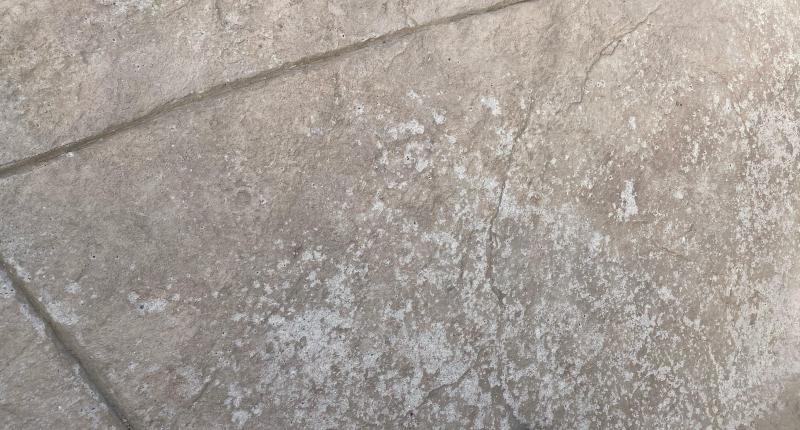
Pool Concrete Problems
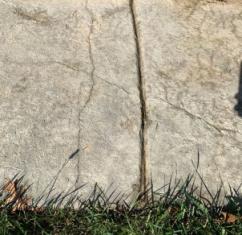 The most common 'problem' in concrete is cracking. There is no way around cracking. Concrete cracks as it cures and typically 'shrink cracks' in 3 days to 30 days. As the water leaves the concrete through the curing process (kind of like drying) the slab literally shrinks. To make up and account for this shrinkage concrete is either saw cut or finished with tool joints to give the slab a place to crack and relieve that stress. The 'lines' in your driveway or sidewalks have been put there deliberately for relief and to give the concrete a place to crack.
The most common 'problem' in concrete is cracking. There is no way around cracking. Concrete cracks as it cures and typically 'shrink cracks' in 3 days to 30 days. As the water leaves the concrete through the curing process (kind of like drying) the slab literally shrinks. To make up and account for this shrinkage concrete is either saw cut or finished with tool joints to give the slab a place to crack and relieve that stress. The 'lines' in your driveway or sidewalks have been put there deliberately for relief and to give the concrete a place to crack.
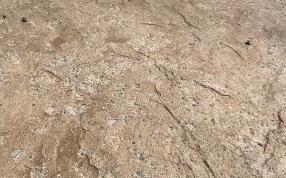 In addition to cracks occurring in the curing process, cracks also can occur from ground movement – up or down. Some of this movement happens as a result of ground shifting, water flow and erosion, settling, and or the ground freezing in the winter and pushing the slab up. Through metal reinforcement and strategically placed relief joints most of these cracks can be kept in the joints and visually not be 'cracks.' If a crack shows up in the joint – then the joint or cut did its job. Sometimes it doesn't. Sometimes cracks do what they want. Such as cracking right next to a relief joint.
In addition to cracks occurring in the curing process, cracks also can occur from ground movement – up or down. Some of this movement happens as a result of ground shifting, water flow and erosion, settling, and or the ground freezing in the winter and pushing the slab up. Through metal reinforcement and strategically placed relief joints most of these cracks can be kept in the joints and visually not be 'cracks.' If a crack shows up in the joint – then the joint or cut did its job. Sometimes it doesn't. Sometimes cracks do what they want. Such as cracking right next to a relief joint.
A bigger and more troublesome concrete issue is spalling or popping. Often incorrectly refer to as 'spaulding'- spalling is when pieces of the slab's surface come off of the concrete in chips or pieces. There are several causes of spalling.
The first and most common cause of spalling is ice melt, salt, or calcium chloride being put on the concrete. Even if the label says 'lawn and concrete safe' IT IS NOT. All ice melt products will cause damage to concrete to some extent. Particularly when used in excess or is in lumps but it can also be tracked onto the slab from another area and create damage. Ice melt and salt equals concrete deterioration. Period.
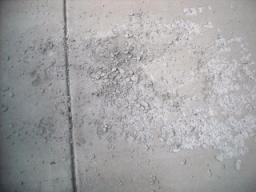 The second cause of spalling is caused by the way the concrete was finished. In some cases (particularly on hot sunny days) the finisher will spray water on the slab to make it more workable. He or she is doing this because they have gotten behind the concrete, and it is setting (getting hard). When water is sprayed across the top of the slab and worked in the concrete, it is indeed workable again but at a very steep price. The water when applied to the surface dilutes the concrete and causes the surface of the concrete slab to cure very weak. It will typically spall or pop in the first couple freezes of the upcoming winter. This damage is usually found on driveways or other broom finished slabs because it is easy to mask over with broom finishing. The finisher literally cheated, and you don't know for a couple of months down the line.
The second cause of spalling is caused by the way the concrete was finished. In some cases (particularly on hot sunny days) the finisher will spray water on the slab to make it more workable. He or she is doing this because they have gotten behind the concrete, and it is setting (getting hard). When water is sprayed across the top of the slab and worked in the concrete, it is indeed workable again but at a very steep price. The water when applied to the surface dilutes the concrete and causes the surface of the concrete slab to cure very weak. It will typically spall or pop in the first couple freezes of the upcoming winter. This damage is usually found on driveways or other broom finished slabs because it is easy to mask over with broom finishing. The finisher literally cheated, and you don't know for a couple of months down the line.
Water may not seem like it can hurt concrete but in the winter it can. Water overflowing from a gutter or other roofline that splashes on the concrete will cause spalling. As the water is dripping it will penetrate the surface. Even if the slab is sealed the water will begin to penetrate the surface and hold there. As the temperature falls, the water that has soaked into the top layer of the slab will freeze and pop the surface of the slab with it. As this new pop is exposed it is especially vulnerable given its crater shape and no sealer. The dripping or running water will now more easily penetrate the slab and the same process will occur. This cycle will continue at an exponential rate and grow in all directions.
The same process can begin without dripping roof-lines. If there are furniture covers or plastic laying on the patio holding water against the surface of the slab it could be a problem. If water is on and in the surface of the patio and the temps freeze, the potential for popping exists.
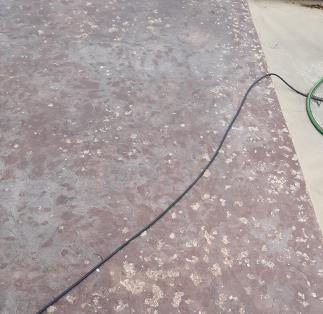 Wicking is the next cause of spalling and popping. Typically, we don't think of concrete being capable of absorbing or wicking moisture, but it does. Very similar to wood in fact. If there is water being held below a concrete slab, that water can be wicked and brought up through the slab to the surface. Once that moisture reaches the surface it will hopefully evaporate off. If the temps fall just wrong it will freeze while in the slab and pop the surface off. This is not usually something we see around inground pools as most swimming pools are situated higher than the rest of the yard, but it CAN happen depending on the typography of the adjoining lots.
Wicking is the next cause of spalling and popping. Typically, we don't think of concrete being capable of absorbing or wicking moisture, but it does. Very similar to wood in fact. If there is water being held below a concrete slab, that water can be wicked and brought up through the slab to the surface. Once that moisture reaches the surface it will hopefully evaporate off. If the temps fall just wrong it will freeze while in the slab and pop the surface off. This is not usually something we see around inground pools as most swimming pools are situated higher than the rest of the yard, but it CAN happen depending on the typography of the adjoining lots.
Sometimes it's just a bad winter. Nothing more nothing less. In winter of 2017/18 Central Ohio experienced a very wet winter with temps ranging consistently in the low to mid 30s in the day to mid 20s at night. For several months. This was the perfect storm for spalling as precipitation was collecting and penetrating the concrete surface during the day and freezing most nights. According to the Ohio Concrete Association it was the worst year on record for spalling and popping. No one did anything wrong. The conditions were just right (or wrong) for concrete damage. Even with a freshly sealed slab many it was a major problem for many property owners.
Unfortunately the fix is more complicated than the cause. It is very difficult if not impossible to cover and repair pops to appear original. On a broom finish slab the damage is repairable but will not match in any way, shape, or form. Adding grey repair mix to the surface and mimicking the original broom pattern is about all that can be done short of a full overlay.
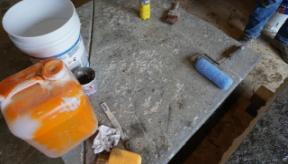
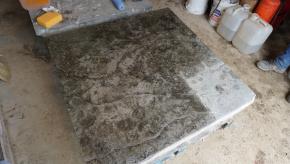
On a decorative slab there is a chance to mask and repair it. If the pops are modest and scattered each pop can be primed and repaired individually. Once the pops are repaired a coloring agent is applied and the entire slab is sealed over. If a large area has been affected it is possible to do a thin overlay over the entire area but there are other complications and considerations if this is to be attempted around an in-ground pool that don't always make it feasible. Most of those complications are related to elevations and the coping transition.
An ounce of prevention is worth a pound of cure. Keeping water off your concrete slab is rule number one. Either from above or plastics holding water against it. Rule number two – keep your slab sealed. Not only does it keep your concrete safer, but it looks great too!
Pool Article Categories:
Copyright Luxury Pools and Living 2005-2024
Cookie Policy | Privacy Policy